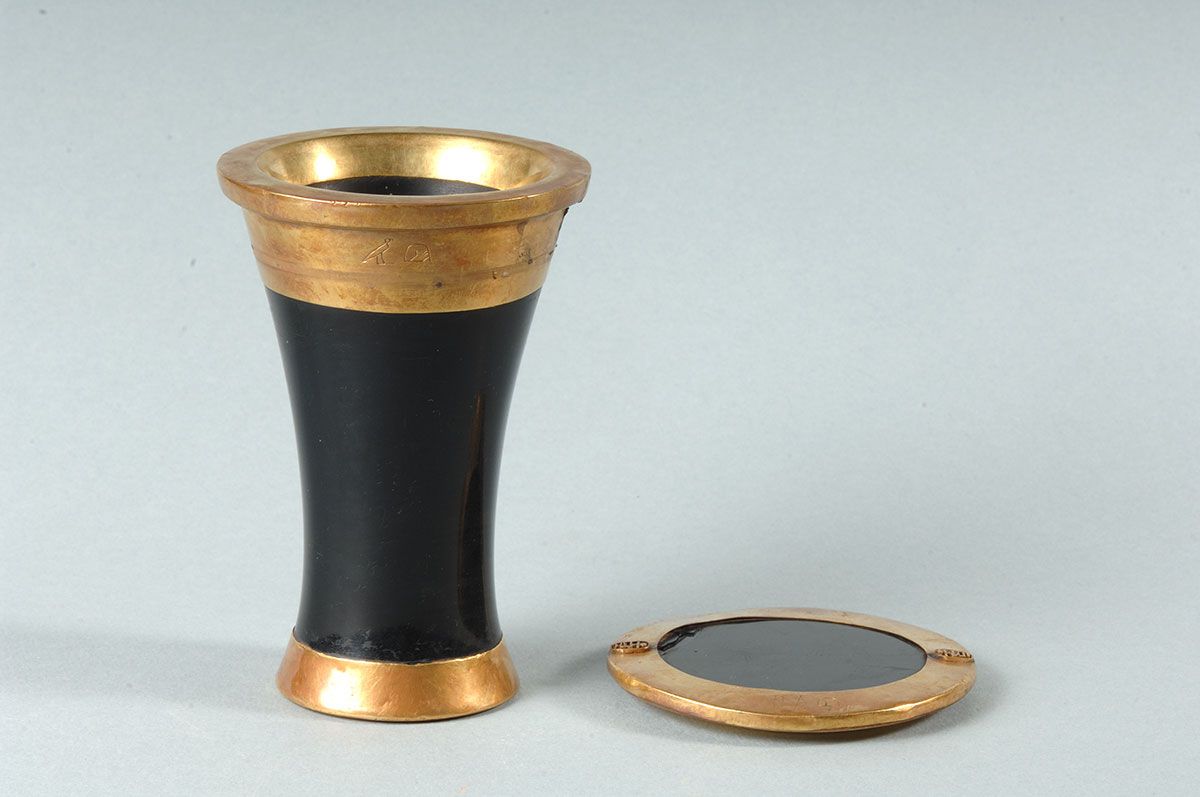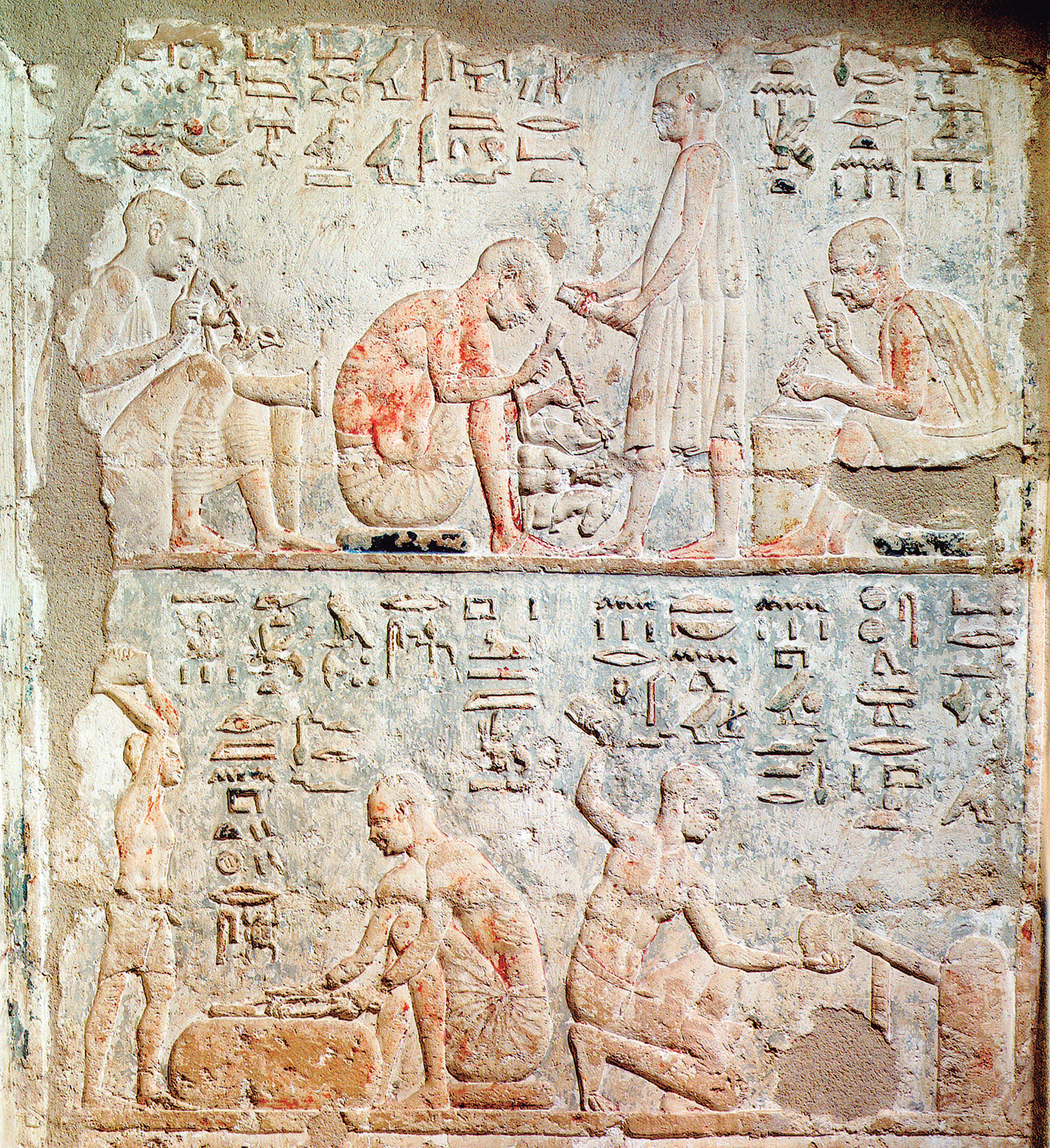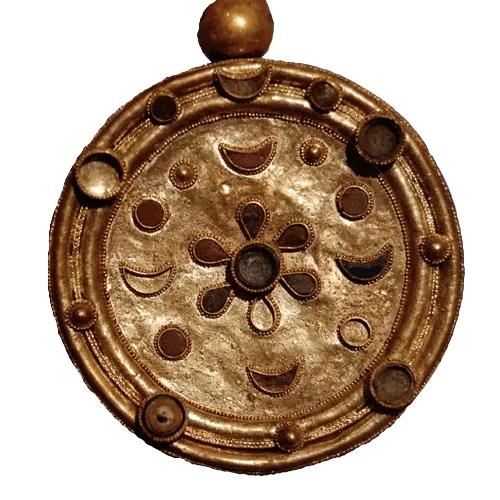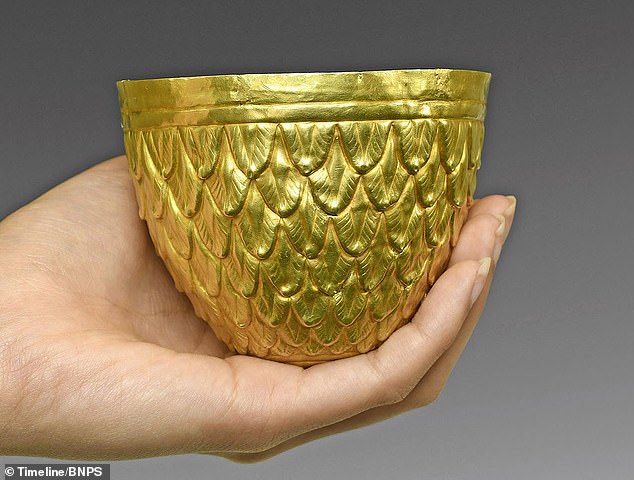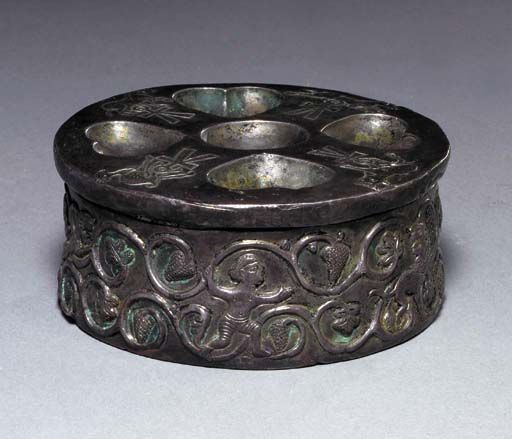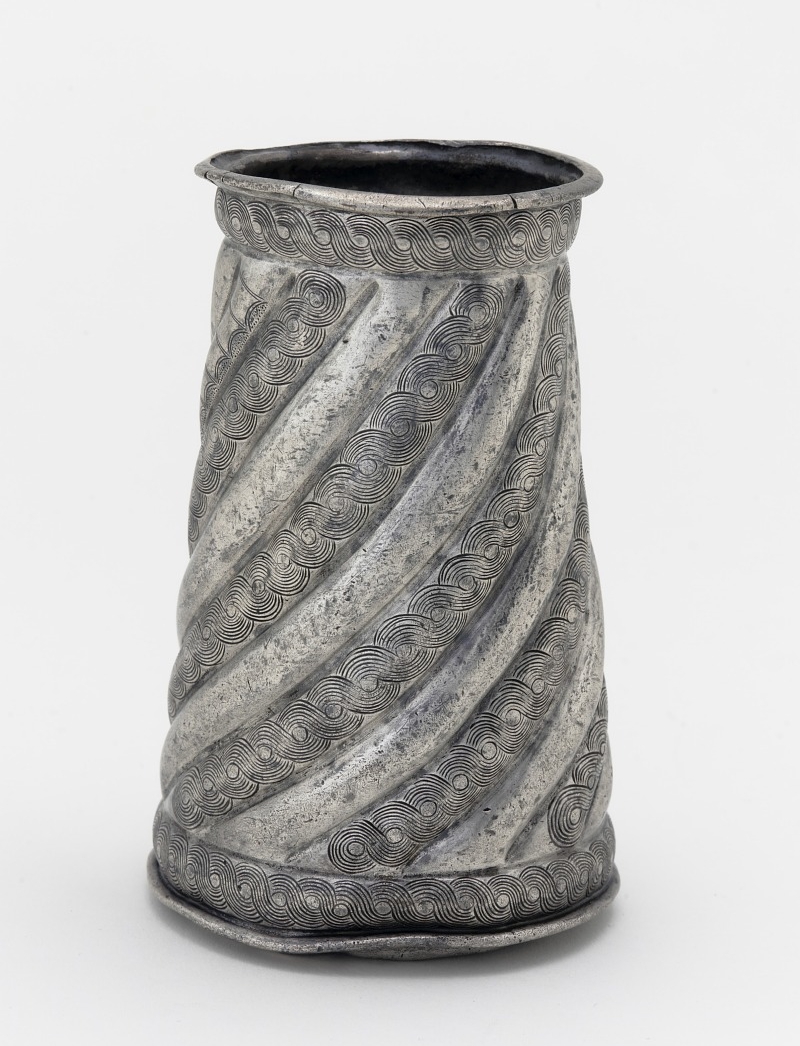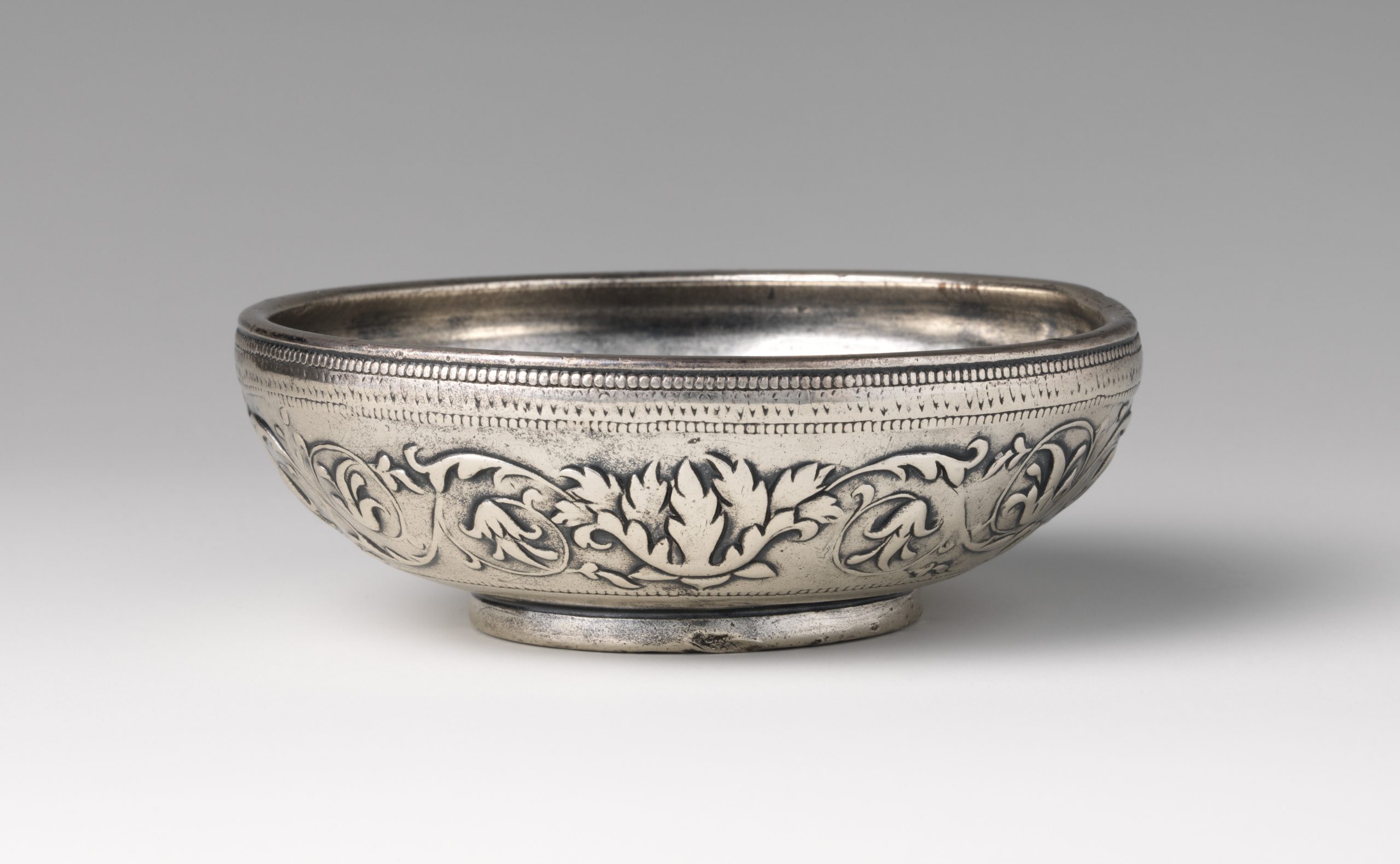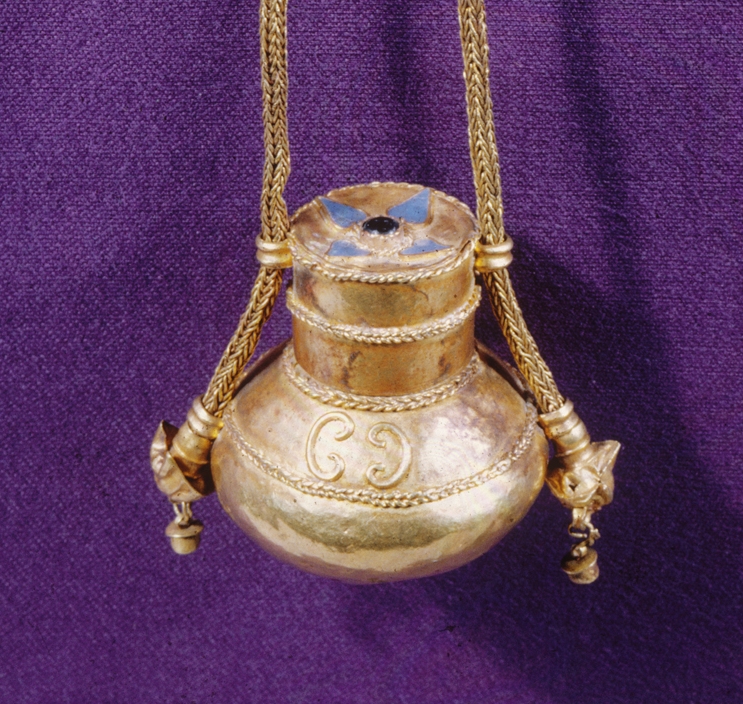Phoenician gold vase from Lebanon, 2000–1600 BCE
14 cm tall, 8 cm wide, 7.5 cm deep. Inlaid with lapis lazuli, with applied female figure.
Found in Byblos (Lebanon), from the area of the Temple of Obelisks.
Now in Beirut, National Archeological Museum, Inv. no. 16555.
The objects found in Byblos could be the work of some contemporary Ebla [Syria] royal workshop, due to remarkable similarities with typical Eblaite productions. [F. Pinnock]



Some Gublite Artifact Possibly Made at Ebla; Frances Pinnock; p. 85-100 https://doi.org/10.4000/syria.1547
“One of the most outstanding objects of the cache is a small gold situla, featuring a rich granulated, encrusted, and inlaid decoration; the vase is characterized by the peculiar shape of the body, divided into four lobes, and by the presence of an applied human figure, possibly a female, of gold foil.”
“To the vase also a number of minute lapis lazuli fragments belong”

